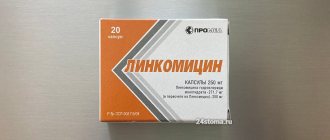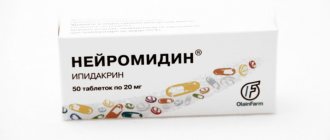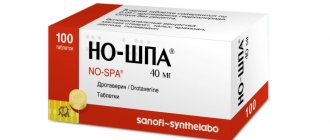Riboflavin (vitamin B2)
Riboflavin
(eng.
riboflavin
) or
lactoflavin
-
vitamin B2
.
Basic functions and norms of vitamin B2 intake
According to Methodological Recommendations MP 2.3.1.2432-08 “Norms of physiological needs for energy and nutrients for various groups of the population of the Russian Federation”, approved by Rospotrebnadzor on December 18, 2008, riboflavin in the form of coenzymes is involved in redox reactions, helps to increase the sensitivity of color to the visual analyzer and dark adaptation. Insufficient intake of vitamin B2 is accompanied by impaired condition of the skin, mucous membranes, and impaired light and twilight vision. The average consumption in different countries is from 1.5-7.0 mg/day, in Russia - 1.0-1.3 mg/day. The established level of requirement in different countries is 1.1-2.8 mg/day. The upper acceptable level has not been established. With a vitamin B2 intake of 1.8 mg/day or more, the vast majority of examined individuals had serum riboflavin concentrations within the physiological norm. The specified physiological requirement for adults is 1.8 mg/day. The physiological need for children is 0.4 to 1.8 mg/day. The 2015–2020 Dietary Guidelines for Americans (official publication of the US Department of Health) recommends the following daily intakes of vitamin B2:
- children under 3 years old - 0.5 mg
- children from 4 to 8 years old - 0.6 mg
- children from 9 to 13 years old - 0.9 mg
- girls from 14 to 18 years old - 1 mg
- women 19 years and older - 1.1 mg
- boys and men aged 14 years and older - 1.3 mg
Riboflavin is a chemical substance
The chemical name of riboflavin is 7,8-Dimethyl-10-(D-1-ribityl)isoalloxazine. The gross formula is C17H20N4O6. Yellow-orange crystalline powder of bitter taste, with a weak specific odor. It is highly soluble in water, stable in acidic solutions, but easily destroyed in neutral and alkaline solutions. Riboflavin solution is yellow in color. Riboflavin is very sensitive to visible and UV radiation and relatively easily undergoes reversible reduction, adding hydrogen at the site of double bonds and turning into a colorless leuco form. The property of riboflavin to be easily oxidized and reduced underlies its biological action in cellular metabolism. Products of riboflavin processing in the body color urine bright yellow.
Riboflavin is the international nonproprietary name of the drug
In the ATC, riboflavin is classified in the group “A11 Vitamins”, subgroup “A11HA Other vitamins in pure form”.
Riboflavin code is A11HA04. Pharmacological group “Vitamins and vitamin-like products”. In addition, since 2021, riboflavin has been included in the group “S01 Drugs for the treatment of eye diseases” and has been assigned the code S01XA26.
Indications for use of riboflavin
Riboflavin is indicated for hypo- and vitamin B2 deficiency, hemeralopia, conjunctivitis, keratitis, iritis, corneal ulcers, cataracts, long-term non-healing wounds and ulcers, general nutritional disorders, radiation sickness, asthenia, intestinal dysfunction, hepatitis.
Riboflavin deficiency can develop with a diet low in animal proteins or when taking riboflavin antagonists. Manifestations of deficiency are angular stomatitis, cheilosis, glossitis, seborrheic dermatitis, normochromic normocytic anemia. Riboflavin deficiency usually occurs in conjunction with a deficiency of other water-soluble vitamins. The need for riboflavin increases in patients on hemo- and peritoneal dialysis.
Riboflavin deficiency increases the risk of developing esophageal cancer (Siurala M. et al).
Sources of Riboflavin
Riboflavin is found in almost all animal tissues and plants (in mg per 100 g of product):
- animal liver and kidneys - 3.64-4.66
- yeast - 2.07-4.0
- eggs - 0.80
- almonds - 0.80
- cottage cheese - 0.40-0.50
- buckwheat – 0.24
- milk - 0.13-0.18
- meat - 0.15-0.17
- white bread, pasta - 0.03-0.05
Ribolflavin is found in flaxseed oil.
Free riboflavin is found only in milk. In other products it is found in the form of a mono- or dinucleotide - coenzyme B2.
Riboflavin is also produced by bacteria resident in the human intestine, in particular Escherichia coli.
.
Riboflavin is presented in pharmacies as a single drug (medicine or dietary supplement), and also as one of the components of many vitamin-mineral complexes: Bio-Max, Complivit, Vitrum, Selmevit, Hexavit, Multi-Tabs, Vitamin-mineral complex from A to Zn (“Vitamins for adults”, Monte-vit premium) and others. Riboflavin is also part of a number of complex medications, for example, Cytoflavin (inosine + nicotinamide + riboflavin + succinic acid).
Riboflavin (vitamin B2) has contraindications, side effects and application features; consultation with a specialist is necessary.
Riboflavin - food supplement
Riboflavin, as a food additive, has code E101 and is defined by SanPiN 2.3.2.1293-03 as a food coloring. Food additive E101 can take two forms:
- E101i – riboflavin
- E101ii – sodium salt of riboflavin-5-phosphate
Back to section
Buy Riboflavin mononucleotide injection solution 10 mg/ml 1 ml No. 10 in pharmacies
Trade name:
Riboflavin mononucleotide
International nonproprietary or generic name:
riboflavin
Dosage form:
solution for intramuscular administration
Compound
For 1 ml:
active ingredient: riboflavin sodium phosphate – 10.0 mg;
excipients: chlorobutanol – 0.5 mg, sodium edetate – 0.3 mg, water for injection up to 1.0 ml.
Description
Clear or slightly opalescent yellow-orange liquid
Pharmacotherapeutic group:
vitamin
Pharmacological properties
Pharmacodynamics
Vitamin B2 has a metabolic effect; interacts with ATP, forming flavinprotein coenzymes - flavin adenine mononucleotide and flavin adenine dinucleotide, which are components of enzymes such as succinate dehydrogenase, cytochrome reductase, diaphorase, amino acid oxidases, etc. By regulating redox processes, it takes part in hydrogen transfer (H+), tissue respiration, carbohydrate, protein and fat metabolism, in maintaining normal visual function of the eye, synthesis of hemoglobin and erythropoietin.
Riboflavin-activated pyridoxal kinase converts pyridoxine (vitamin B6) into the active form pyridoxal phosphate.
Promotes the conversion of tryptophan into niacin, maintaining the integrity of red blood cells. Part of glutathione reductase and xanthine oxidase.
It is synthesized by normal intestinal microflora and is itself necessary for its maintenance.
Pharmacokinetics
Suction
Rapidly absorbed from the injection site.
Distribution
Communication (mainly in the form of metabolites - flavin adenine mononucleotide and flavin adenine dinucleotide) with plasma proteins - 60%. Distributed throughout all organs and tissues, deposited in muscle tissue, liver, spleen, kidneys and myocardium. Penetrates through the placenta and into breast milk.
Metabolism
Metabolized in the liver. The main metabolites are flavin adenine mononucleotide and flavin adenine dinucleotide.
Removal
The half-life (T 1/2) is 66-84 minutes, the equilibrium volume of distribution is about 40 l, the total clearance is about 0.3 l/min.
It is excreted from the body by the kidneys, almost completely in the form of metabolites; when taken in high doses, it is mainly unchanged. In small quantities it is excreted through the intestines.
It is excreted during hemodialysis, but much more slowly than with renal excretion.
Indications for use
Riboflavin is a mononucleotide used as prescribed by a doctor.
Prescribed to adults and children with hypo- and avitaminosis B2, as well as in complex therapy of skin diseases (pruritic dermatoses, neurodermatitis, chronic eczema, photodermatoses, etc.)
Contraindications
- Hypersensitivity to the drug. - Pregnancy. - Breastfeeding period.
Use during pregnancy and breastfeeding
It is not recommended to take during pregnancy and breastfeeding, due to the lack of clinical data on the effectiveness and safety of the drug during this period.
Directions for use and doses
Intramuscularly.
Adults are prescribed 10 mg (1 ml of 1% solution) once a day.
The course of treatment is 10-20 days.
Children, depending on age, are prescribed 5 mg-10 mg (0.5-1 ml of 1% solution) for 3-5 days in a row, then 2-3 times a week.
Side effect
To determine the frequency of side effects of the drug, the following classification is used: very often (≥ 1/10); often (≥ 1/100 and < 1/10); uncommon (≥ 1/1000 and < 1/100); rare (≥ 1/10000 and < 1/1000); very rare (< 1/10000); frequency unknown (cannot be determined from available data).
From the respiratory system, chest and mediastinal organs:
frequency unknown: bronchospasm.
From the gastrointestinal tract:
frequency unknown: dyspepsia.
For the skin and subcutaneous tissues:
frequency unknown: allergic reaction in the form of skin itching and rash, urticaria.
Overdose
There were no cases of overdose.
Treatment: symptomatic therapy.
Interaction with other drugs
Reduces the activity of doxycycline, tetracycline, oxytetracycline, erythromycin and lincomycin. Incompatible with streptomycin.
Chlorpromazine, imipramine, amitriptyline, by blocking flavinokinase, disrupt the incorporation of riboflavin into flavin adenine mononucleotide and flavin adenine dinucleotide and increase its excretion in the urine.
Thyroid hormones speed up metabolism.
Reduces and prevents the side effects of chloramphenicol (disturbance of hematopoiesis, optic neuritis).
Compatible with drugs that stimulate hematopoiesis, antihypoxants, anabolic steroids.
special instructions
It should be borne in mind that riboflavin is destroyed under the influence of rays from the blue part of the solar spectrum (about 450 nm). Colors urine light yellow.
The injections are somewhat painful.
Impact on the ability to drive vehicles and machinery
The use of the drug does not affect the ability to perform potentially hazardous activities that require increased concentration of attention and speed of psychomotor reactions (driving vehicles, working with moving mechanisms, working as a dispatcher, operator).
Release form
Solution for intramuscular administration, 10 mg/ml.
1 ml in ampoules made of colorless glass of hydrolytic class I.
A self-adhesive label is placed on each ampoule.
5 or 10 ampoules are placed in a blister pack made of polyvinyl chloride film and printed aluminum foil, varnished or without foil.
1 or 2 blister packs along with instructions for use are placed in a pack of imported cardboard.
1 ml per polymer ampoule.
A self-adhesive label is placed on each ampoule.
5 ampoules are placed in a foil film bag.
2 packets each along with instructions for use in a cardboard pack.
Storage conditions
In original packaging at a temperature not exceeding 25 °C. Keep out of the reach of children.
Best before date
2 years.
Do not use after the expiration date.
Vacation conditions
Dispensed by prescription.
Riboflavin Mononucleotide (amp. 1% 1ml No. 10)
A country
Russia
The country of production may vary depending on the batch of goods. Please check with the operator for detailed information when confirming your order.
Active substance
Riboflavin
Compound
Active substance: Riboflavin.
pharmachologic effect
Replenishes vitamin B2 deficiency, regulating redox processes. Chemically pure riboflavin and its nucleotides are quickly absorbed into the gastrointestinal tract, absorption is slowed down by various inflammatory processes in the intestines, circulatory disorders, achylia, chronic gastritis, enteritis; In young children, absorption occurs more slowly than in adults. The distribution in the body is uneven: the largest amount is found in the myocardium, liver, and kidneys. It is excreted primarily in urine unchanged. Elimination of riboflavin is increased in thyrotoxicosis. It plays an important role in metabolism and participates in growth processes. The daily requirement for an adult is 2.5 mg, for heavy physical work - about 3 mg; for children from 6 months to 1 year - 0.6 mg, 1-1.5 years - 1.1 mg, from 1.5-2 years - 1.2 mg, 3-4 years - 1.4 mg, 5 -6 years - 1.6 mg, 7-10 years - 1.9 mg, 11-13 years - 2.3 mg, 14-17 years: for boys - 2.5 mg, for girls - 2.2 mg. Supports the process of phagocytosis, affects the morphology and function of the central and autonomic nervous systems, plays an important role in maintaining normal visual function of the eye and in the synthesis of erythropoietin and hemoglobin. Somewhat increases the secretory function of the stomach (participates in the formation of hydrochloric acid in gastric juice), improves bile secretion, facilitates the absorption of carbohydrates in the small intestine, and is necessary for maintaining normal intestinal microflora. Helps improve the glycogen-fixing, synthetic, antitoxic function of the liver, increases the sensitivity of liver cells to the action of insulin, promotes insulin incretion. Normalizes the level of bilirubin in the blood (hepatitis A).
Indications for use
Hypo- and ariboflavinosis of exo- and endogenous origin, hemeralopia, conjunctivitis, iritis, keratitis, corneal opacities, cataracts, long-term non-healing wounds and ulcers, radiation sickness, asthenia, cheilitis, angular stomatitis (jams), glossitis, itchy dermatosis, eczema, neurodermatitis, photodermatosis, seborrhea, red acne, candidiasis, viral hepatitis A, chronic hepatitis, cirrhosis of the liver, gastrointestinal dysfunction, sprue, malnutrition, anemia, leukemia. For preventive purposes - decreased absorption from the gastrointestinal tract, intensive elimination and increased need for riboflavin (acute and chronic hypoxia, respiratory and heart failure, burn disease, frostbite, protein deficiency and excess carbohydrate nutrition, acute infectious diseases, including during treatment antimicrobial agents that suppress gram-negative intestinal flora, phototherapy).
Mode of application
Intramuscular and subcutaneous: Adults: 0.01 g (1 ml of 1% solution) 1 time per day. The course of treatment is 10-15-20 days. Children are prescribed 0.005-0.01 g (0.5-1 ml of 1% solution) first for 3-5 days in a row, then 2-3 times a week.
Interaction
Aminazine, imizine, amitriptyline disrupt (flavin kinase blockade) the incorporation of riboflavin into flavin mononucleotide, flavin adenine dinucleotide and increase its excretion in the urine. When combined with thyroid hormones, metabolism accelerates. Under the influence of m-anticholinergics, absorption and bioavailability increase (due to slower intestinal motility). Compatible with antianemic drugs, antihypoxants, anabolic steroids. Prevents or reduces the undesirable effects of chloramphenicol (disturbance of hematopoiesis, optic neuritis). Possible reduction in the activity of tetracyclines.
Side effect
Visual impairment, kidney function, allergic reactions.
Contraindications
Hypersensitivity, nephrolithiasis.
Overdose
No information available.
special instructions
The urine may turn yellow.
Dispensing conditions in pharmacies
On prescription


